The Pulling Up Piccadilly Prank —
I recently received the following email from Marjorie:
In the late 50's, on the morning of April 1, a group of Sydney City Council workers went with jackhammers and other machinery and started an approved excavation in the middle of George St. (the main drag). Hoaxers from Sydney University called the police and warned them that a group of Uni Students dressed as Council workers were tearing up George St. They simultaneously went to the site and warned the workers that a group of students, disguised as police, were on their way to disrupt the job. The result was, understandably, chaos in the main street. I was told about this when I was about 19, (1963) but never saw an official report.
I love emails like this. They bring out the hoax-history geek in me. So here goes.
What Marjorie describes is a prank that was first pulled off by the British "King of Pranksters,"
Horace de Vere Cole, in 1910. Cole is best known for the
Dreadnought hoax of 1910, in which he and a group of friends dressed up as a group of Abyssinian dignitaries, and tricked the British Navy into receiving them with full ceremonial pomp on the H.M.S. Dreadnought.
He staged the "Pulling Up Piccadilly" prank (as he called it) soon after. He and a group of accomplices dressed up as workmen, walked over to London's Piccadilly Street, and started digging a hole in the middle of it. They asked a policeman to direct traffic around them as they worked, and the policeman, thinking they were real workers, did as requested. After half an hour of work, they all dropped their tools and retired to the nearby Ritz Hotel to watch the mayhem they had created.
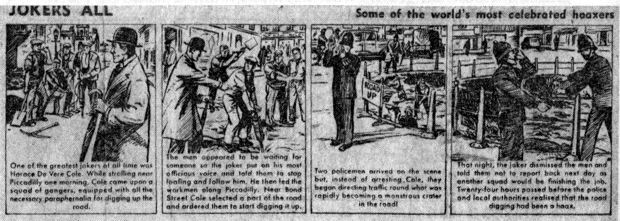
An undated cartoon account of Cole's prank -- that gets the details of the prank wrong.
Cole is an interesting character. There was a violent, self-destructive side to his pranks, as if he felt compelled to lash out at the world around him. Although he inherited a great deal of money, he lost it all and died penniless. If you want to read more about him, I highly recommend a recent biography of him by Martyn Downer titled
The Sultan of Zanzibar: The Bizarre World and Spectacular Hoaxes of Horace de Vere Cole.
The same prank was later reported to have been perpetrated by
Hugh Troy in New York. (Troy was like the American counterpart to Horace de Vere Cole, but without the violent, self-destructive side). Or, at least, H. Allen Smith in his 1953 book
The Compleat Practical Joker claimed that Troy repeated the prank, though Smith isn't the most reliable of sources:
Early one morning Troy led four companions down Fifty-fourth Street to Fifth Avenue. They wore overalls, carried picks and shovels and had provided themselves with red lanterns and 'Men Working' signs. Opposite the old Rockefeller residence they set to work ripping up the pavement. By noontime they had dug quite a hole in the street. Troy posted flags and signs and they knocked off for lunch. He led his grimy laborers into the dining room of a fashionable hotel near by. The headwaiter was horrified, of course, but Troy was prepared.
"It's all right," he whispered. "It's a little gag the manager wants us to put over."
After a hearty meal, during which some of the other diners stamped out of the place with their noses in the air, Troy led his men back to the excavation. They worked through the afternoon, widening and deepening the hole, then hung up the lanterns and signs and went home. The municipal authorities did not discover the hoax until evening of the following day and they were so bewildered by it that they never did find out who was responsible.
Marjorie's email was the first I had heard of an Australian version of the prank. So I did some searching in the National Library of Australia's newspaper archive, and eventually I found a brief reference to such an event — in the
Perth Sunday Times, April 18, 1954.
The Sunday Times article discusses the tradition of student pranks during graduation week, complaining that Perth students hadn't been holding their own in this tradition when compared with students on the east coast of Australia. Towards the end, the author gives some examples of recent east-coast pranks (from around 1952). There's a brief reference to an Australian version of Cole's 'Pulling Up Piccadilly' prank at the bottom of the list:
I'm guessing that the story Marjorie heard (with the details about the students simultaneously warning the police and the workers) was an embellished version of what actually happened. Which isn't surprising, since pranks have a way of "improving" as they're retold. More likely, the students simply restaged Cole's prank. And it wasn't an April Fool's Day prank, but rather a graduation week prank. But it appears to be true that Sydney University students did stage the street-digging prank around 1952.
I'm not aware of any later stagings of the prank, but I'd be surprised if someone hasn't repeated it in the last half-century.


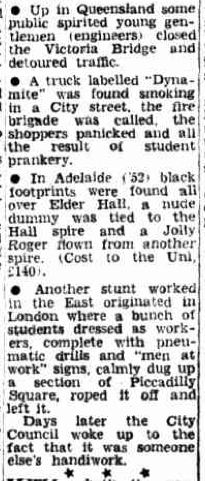


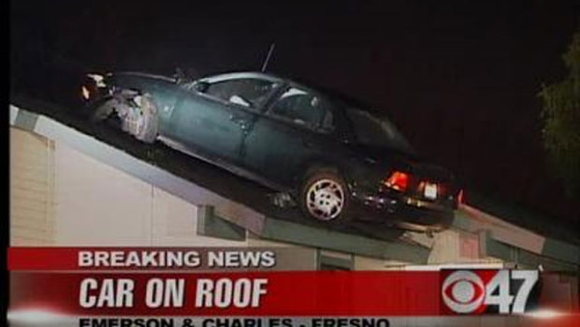
 Unidentified pranksters broke into the Sussex Horse Rescue Trust in Uckfield, East Sussex and transformed "Ant" the donkey into a zebra by spray-painting stripes on him (express.co.uk). Ant wasn't hurt in any way, though the spray paint reportedly had a strong, unpleasant smell. The RSPCA condemned the prank: "It's shocking people would think it was funny to spray-paint a donkey in this way. We take reports of animals being painted very seriously." This prank immediately reminded me of the tradition of Tijuana Zebras, which I last posted about back in 2006. I noted then that the Tijuana tradition of painting donkeys to look like zebras was dying out, but perhaps it's reemerging in Sussex.
Unidentified pranksters broke into the Sussex Horse Rescue Trust in Uckfield, East Sussex and transformed "Ant" the donkey into a zebra by spray-painting stripes on him (express.co.uk). Ant wasn't hurt in any way, though the spray paint reportedly had a strong, unpleasant smell. The RSPCA condemned the prank: "It's shocking people would think it was funny to spray-paint a donkey in this way. We take reports of animals being painted very seriously." This prank immediately reminded me of the tradition of Tijuana Zebras, which I last posted about back in 2006. I noted then that the Tijuana tradition of painting donkeys to look like zebras was dying out, but perhaps it's reemerging in Sussex.
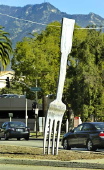 A few days ago a fork appeared in the middle of a Pasadena road. It's located, appropriately, at a fork in the road, where Pasadena and St. John avenues divide. From the Pasadena Star News:
A few days ago a fork appeared in the middle of a Pasadena road. It's located, appropriately, at a fork in the road, where Pasadena and St. John avenues divide. From the Pasadena Star News: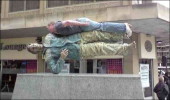 An internet fad that managed to escape my attention is the "lying down" craze, in which people post photos of themselves lying face down, hands against their sides, in unusual locations. This sounded like fun to a group of British doctors and nurses: "The staff were pictured face down on resuscitation trolleys, ward floors and the air ambulance heli-pad during a night shift at the Great Western Hospital in Swindon, Wilts." Their mistake was to then post the photos on Facebook. Seven of them have now been suspended pending disciplinary hearings. [sun.co.uk]
An internet fad that managed to escape my attention is the "lying down" craze, in which people post photos of themselves lying face down, hands against their sides, in unusual locations. This sounded like fun to a group of British doctors and nurses: "The staff were pictured face down on resuscitation trolleys, ward floors and the air ambulance heli-pad during a night shift at the Great Western Hospital in Swindon, Wilts." Their mistake was to then post the photos on Facebook. Seven of them have now been suspended pending disciplinary hearings. [sun.co.uk]
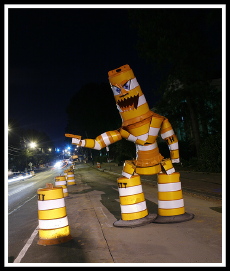 Proof that the art of the student prank hasn't quite died. N.C. State University student Joseph Carnevale has been arrested and is facing misdemeanor charges for damage to property after creating a "barrel monster" that menacingly pointed its finger at motorists on Hillsborough Street in Raleigh. The creation of the monster is documented at nopromiseofsafety.com.
Proof that the art of the student prank hasn't quite died. N.C. State University student Joseph Carnevale has been arrested and is facing misdemeanor charges for damage to property after creating a "barrel monster" that menacingly pointed its finger at motorists on Hillsborough Street in Raleigh. The creation of the monster is documented at nopromiseofsafety.com.